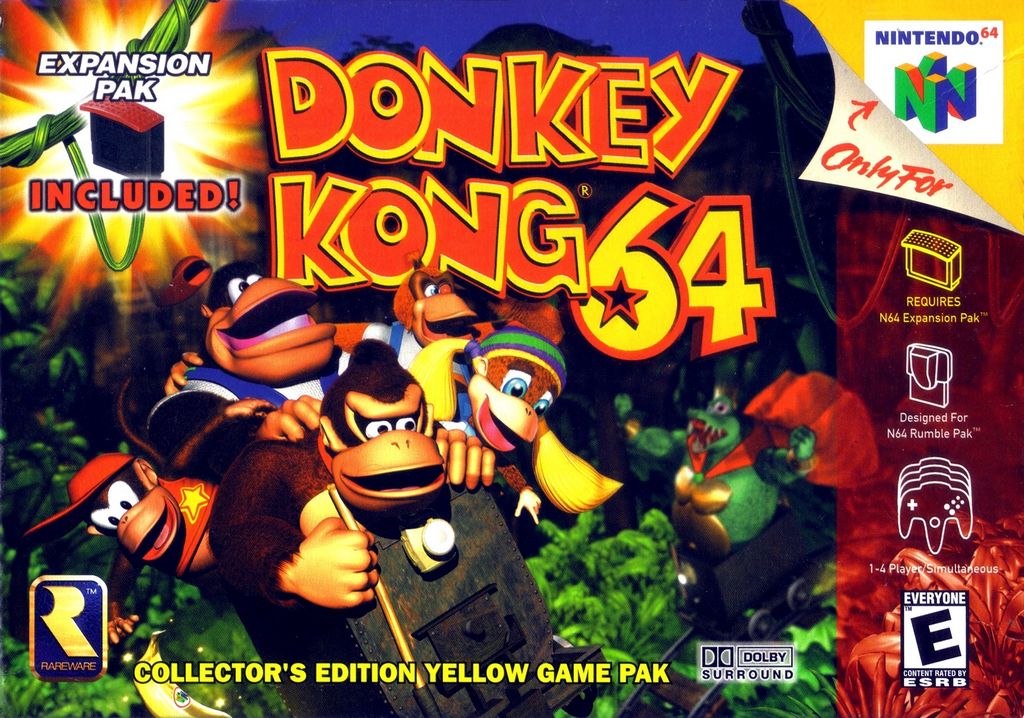It stands as an one-of-a-kind and wonderful console also by today’s requirements. Both from a technical as well as cultural perspective, it was merely stupendous. This article showcases the history of the Nintendo 64 along with explores it from a technological viewpoint. If you’re like me, you likely have warm memories of this console. If you want the technological bits, skip in advance to the design.
To set the stage, the N64 was first launched in Japan in 1996. When you think about the 1990’s you might think about the pocket-sized Gameboy color with Pokmon Red and Blue. But actually, the Gameboy color really did not come out till 1998, 2 years after the N64 appeared.
The Gameboy at the time was the remarkably big and heavy, Gameboy. With a grayscale screen and filled with 4 AA batteries, it was a brick of a pc gaming experience. The Gameboy pocket (a somewhat smaller sized variation of the successful gameboy) had actually appeared in some markets, but really did not see the exact same widespread availability as the original Gameboy.Read more roms-download.com At website Articles
This is to illustrate the sheer madness that the Nintendo 64 represented, particularly in the sub $300 rate factor. The idea of a 64 bit console with 3D graphics simply under 6 years after the 16 little bit SNES appears reasonable in hindsight however ludicrous at the time.
Let’s study the systems of itself. It has a couple of peculiarities. You’ve possibly discovered the wonky form of the controller(and likely if you read this, you used it). It commonly really felt that you needed three hands to really properly make use of the all the buttons.
You’ll notice it has an analog stick. This was the first business video game with an analog stick as its primary input system. The D-Pad had been the defacto requirement for years and Nintendo directly had a lot of excellent modern technology and experience with making 8-way D-Pads.
An entertaining tale from one LucasArts developer is that just certain participants of the development group were enabled to know what the controller appeared like. So they had to be kept in a card box with openings cut in so you can reach inside and manage the controller. The common joke on the designer group is that the controller was a dish of telepathic water you stuck your hand into, however naturally, you had to think in Japanese.
In addition to the trident like form, the control stick had on its face sharp, increased circular ridges that if played also hard, might leave marks on your thumb or hand. We’ll discuss the industrial layout and reasoning behind the controller later on as soon as we begin talking about the technological design of the console itself. Allow’s discuss the background of Nintendo as it assists comprehend a lot of their decisions. This section will certainly be quite quickly.
Nintendo was founded in 1889 as a Hanafuda (花札) manufacture. Hanafuda are a type of playing card. After Japan closed all contact with the western world in 1633, the Federal government outlawed the playing cards that had actually been introduced by the Portuguese in the mid 16th century. It was a 48 card deck with 4 suites and looked relatively comparable to the 52 card deck we have today. In reaction to the restriction, cards came to be disguised, commonly with flowers.
As the Government caught on, they started to outlaw the new kinds of the having fun cards. Card manufactures responded by more obfuscating the cards, end up being a growing number of elaborate as time went on. Actually, to this day, Nintendo still makes Hanafuda cards themed with various computer game IP that they own. The point of this introduction is that Nintendo has a background of being an underdog, taking their time, and being very protective/secretive about what they do.
The turning factor for Nintendo was available in 1956 when they went to the U.S.A.. The world’s largest manufacture of playing cards at the time was headquartered there. The current CEO (Yamauchi) was disappointed to locate the largest business in their sector headquartered in a tiny run down office over a grocery store. When your largest competitor in your well established sector remains in a tiny workplace, it is a good wakeup phone call that it may be time to increase to various other markets.
In between 1963 and 1968, they explored. Taxi’s, resorts, immediate noodles, and vacuum were amongst some of the products they attempted. However, in spite of their initiatives they located they were only good at making toys. The 1964 Olympics remained in Tokyo, provided a much necessary financial boom. The marketplace for toys was limited, affordable, and reduced margin. Digital toys had greater margins and much less competition. Nintendo had a behavior of hiring skilled electrical engineers to run their setting up and assembly line and those designers had a practice of developing imaginative services for problems on the line.
One certain engineer made a robot arm as a sort of plaything. It was a creative design that used what was on hand. Hiroshi Yamauchi, the CEO of Nintendo, came through the factory in 1966 and saw the plaything for what it was. They asked him to make it completely, which came to be the Ultra Hand and was a big success. The designer, Gunpei Yokoi, took place to develop the Game & Watch Series and supervise Donkey Kong, Mario Bros, Metroid, the Online Boy, to name a few. It was Yokoi that claimed:
The Nintendo means of adapting innovation is not to seek the state-of-the-art yet to utilize mature modern technology that can be mass-produced inexpensively.
Another among their first genuine hits was the Nintendo Beam Weapon, a duck search like video game. Keep in mind, Pong wasn’t also on the marketplace yet. Nintendo bought up old bowling lanes and made interior shooting galleries with their light guns. This showed to be pricey to maintain as it needed room and personnel so they decided to focus on home consoles and arcades rather than running their own areas. The preferred Mr. Video game & Watch was released in 1981.
The video game market in the United States crashed in 1983. While the exact cause is rather of a secret, Nintendo greatly credited it to a proliferation of crappy top quality video games that wore down consumer trust fund. Settlements with Atari to redistribute their home console, the Famicon (or the NES as it would later be known) had crumbled, Nintendo had not been a player in the United States market. This left just Sega (one more Japanese firm) and Nintendo as big gamers in the computer game industry. Nintendo determined they would certainly not repeat the error of Atari and various other US based companies and focus on each game they launched having a seal of high quality and as much as their exacting standards. This pattern proceeded until the later years of the Nintendo switch, where the bar for access was lowered somewhat.
The Nintendo 64
Now allow’s take about the N64 itself. One significant feature about it is that the N64 was mosting likely to have a drive attachment (referred to as the N64DD). The job was drawn back in the SNES days as Nintendo partnered with another business to develop the disk drive, Sony. Relatively late in the job, Nintendo pulled out for unidentified factors. Sony, not surprisingly huffed, decided to proceed the job on their own, eventually producing the PlayStation. Nintendo additionally wished to call it the Ultra 64, which you could see in chip names (NUS or Nintendo Ultra Sixty-four). Konami possessed the duplicate right of a number of ultra-like video games (Ultra Football, Ultra Tennis, etc). Analyzing the ramifications, they rebranded to N64.
Leading up the launch of the N64, Nintendo actually took place the buzz circuit. At the time, a company referred to as Silicon Graphics Inc (SGI), was referred to as a graphical technological giant. For eight years (1995-2002) all the films chosen for an academy award for aesthetic effects had their impacts produced on SGI systems. You could think of them as the NVIDIA of their day.
A SGI Onyx system, made use of for N64 development, retailed for around $100,000-250,000 in early 1995
When Nintendo was marketing what the full power of the an SGI system in a home console form element with a home console rate. This had not been helped by the fact that the demonstrations that Nintendo flaunted were made on the extremely costly Onyx server-class systems. We have actually gotten utilized to unbelievable amounts of calculating power being stuffed into every smaller sized rooms thanks to mobile phones and the cloud, however to place it in viewpoint, this would certainly be like Microsoft hinting that the following Xbox would certainly have the same power as an entire Azure rack.
The Onyx systems visualized over were in fact typically what was made use of for N64 advancement. In fact, one game workshop told a rather funny tale a couple of years later at a pc gaming convention concerning getting a phone call from the FBI asking why they were acquiring numerous army course super computers. Generally, this system would be utilized for establishing 3d models, re-topologizing them, constructing the code, and since the design was similar sufficient, even run N64 simulations.
 Nintendo 64: Architecture and History |
